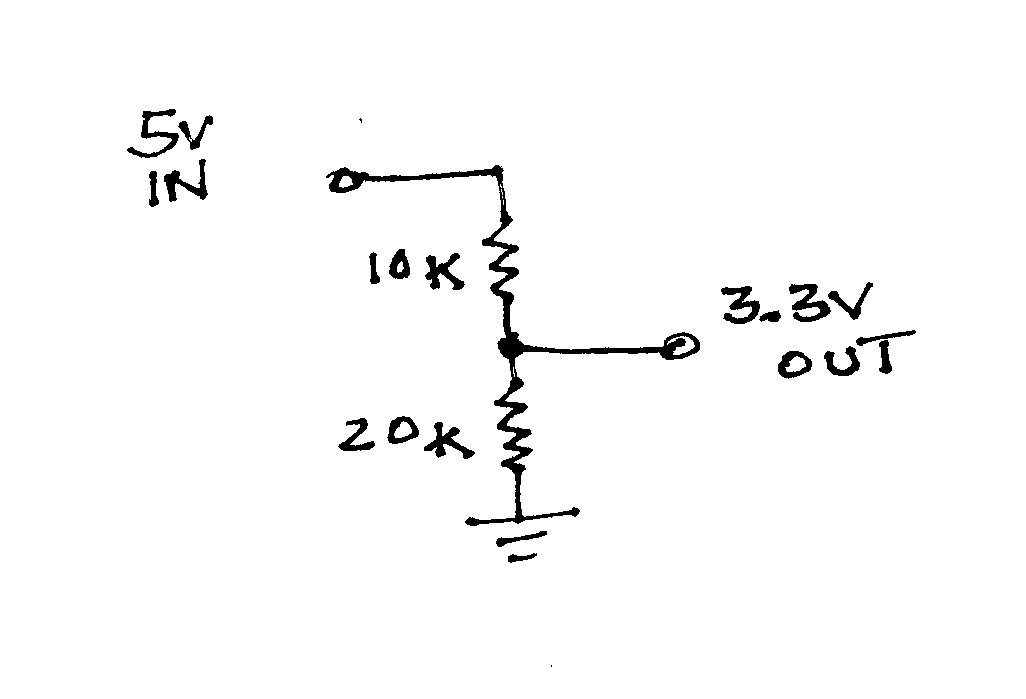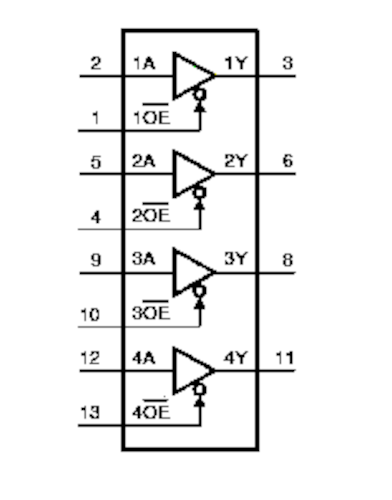Main menu
You are here
Level Shifters
[last updated: 2022-10-07]
go to: ...
-----
- Why:
Some components/modules/devices have inputs/outputs that can handle 5v.
Other devices have I/O that can only handle 3.3v. Putting a 5v signal into a 3.3v input will usually damage the part.
If you need to connect two such different devices, you must "level-shift" their I/O voltages so they work with each other without damage.
(Note we're only talking digital signals here, not analog.) - What:
Level shifters are components/modules that take in say a 5v digital signal and put out a 3.3v signal,
or they take in a 3.3v signal and put out a 5v signal.
(There are of course other variations, but this is the basic, most common usage). - Types:
- You can build a level shifter out of discrete components:
- Convert 5v signal to 3.3v: This is the easy one: a resistor voltage divider:
- If you need to go from 3.3v to 5v
You may not need to do anything. Devices with 5v inputs will usually trigger with high-level voltages on the order of a volt,
so a 3.3v high signal will still be read as high by the 5v input.
But if you want to be sure, this transistor (or mosfet) circuit will do the job.
-------------------------------------------------------------------
- Or you can get an integrated circuit/module designed for the task:
- 74AHCT125 - QUAD level shsifter:
- Ada: PID: 1787
These devices can only put out a single voltage.
That is, if your circuit/project needs both 5v and 3.3v output signals, then you must use two units.
The output voltage is equal to the Vcc applied to the chip. - Un-used inputs should be tied to Vcc or Gnd. If left floating, current consumption is high.
- Outputs only source about 8ma.
- "A" pins are inputs, "Y" pins are outputs, and "OE" pins are low-active enable signals.
- 4050 HEX Buffer:
-------------------------------------------------------------------
- You can build a level shifter out of discrete components:
.
.
.
eof





